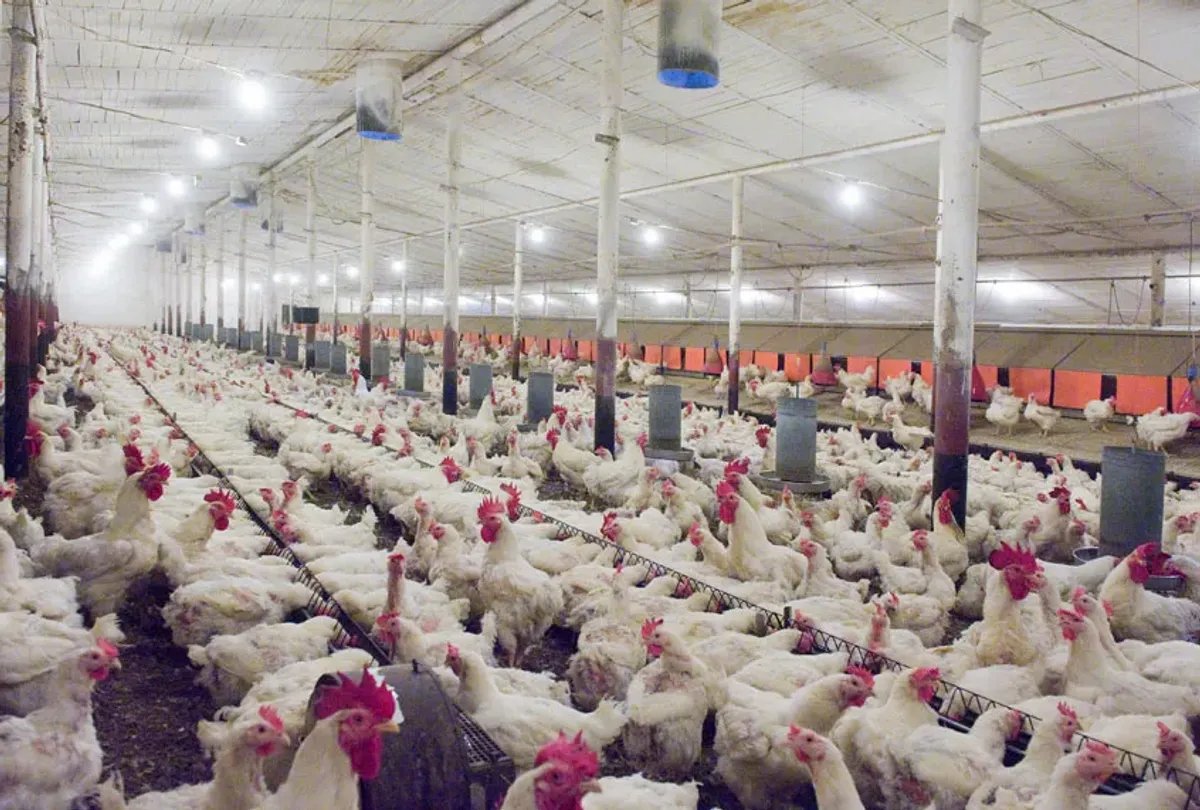EMOTION HAS NO PLACE IN SCIENCE
Or does it?
Our old paradigm of science has served us well, no emotions were intrinsically required to make the computer, phone or tablet you are reading this on. In crafting these objects emotions were not considered a necessary component; the focus was primarily on logical and analytical processes.
However, it's worth noting that your smartphone, tablet or watch might not be such an object of desire if it were not crafted with some emotion in the design phase but it could be argued that emotion was not required for the base functionality.
As we move into the future, there's a growing recognition of the importance of integrating a more holistic view of human experience into our scientific and technological pursuits. This new perspective suggests re-evaluating the benefits and roles that human emotions play in the processes of discovery and decision-making. Embracing this shift could lead to more innovative solutions and a deeper understanding of the world around us, highlighting the need for a new paradigm in science that values emotional intelligence as much as rational thought.
The end point of reductionism
It might sound like a bold statement to say we’ve reached the end point of reductionism and in many ways this can be symbolised by the designation of the Planck scale as this represents the smallest measurement of distance that is possible and no, before you ask, you can’t have half a Planck, that’s like infinity +1 and getting into why this is the case brings us into a place where philosophy meets science in a very strange way.
Let us explain why…
The Planck scale represents a fundamental limit in physics, below which the conventional laws of physics as we understand them cease to apply. It is defined by the Planck length, which is approximately 1.616×10−351.616×10−35 meters. This scale is derived from fundamental constants in nature: the gravitational constant (G), the reduced Planck constant (ℏℏ), and the speed of light in a vacuum (c).
Our minds can simply not cope with this, the Planck scale is 10x-20 smaller than a proton, to put this into some even vague reference point that we can grasp, if we scaled an atom to the size of the earth a Planck length would be about the size of a proton inside a single atom.
Mind blown yet?
The significance of the Planck scale, especially the Planck length as the smallest possible measurement of space, lies in several key aspects of theoretical physics and our understanding of the universe:
If we scaled an atom to the size of the earth a Planck length would be about the size of a proton inside a single atom.
At the Planck scale, the effects of quantum mechanics and gravity are believed to converge, requiring a unified theory of quantum gravity (such as string theory or loop quantum gravity) to accurately describe phenomena. This scale is where the smooth fabric of space-time, predicted by General Relativity, is expected to break down into a quantum foam, with space-time exhibiting a discrete or granular structure.
In the same way that when you ask a child to name something bigger than infinity they say “Infinity +1” the same is true of the Planck scale, you can’t have 1/2 a Planck.
The reasons why nothing can be smaller than the Planck scale are quite mind boggling…..
Quantum Jitters: At incredibly small scales, the universe is governed by quantum mechanics, where things are a bit fuzzy. This fuzziness means that particles don't have exact positions or speeds as we think of them in our everyday world. The Planck length is so small that, according to quantum theory, the concept of distance starts to lose its meaning. Below this scale, the idea of particles being "here" or "there" becomes meaningless because of quantum uncertainty, which makes it impossible to pin down anything more precisely.
Quantum Foam: Quantum foam, also known as spacetime foam was proposed by physicist John Wheeler in 1955 and refers to the way spacetime behaves at these minuscule distances.
At such tiny scales, the smooth spacetime described by general relativity breaks down, and quantum effects become dominant. The theory suggests that spacetime is not static and smooth but instead is highly turbulent and dynamic, fluctuating wildly and unpredictably. These fluctuations mean that spacetime at the Planck scale is frothy or foamy, hence the name "quantum foam." This foam-like structure involves constant changes, with particles and spacetime configurations popping in and out of existence.
Extreme Energy and Black Holes: To observe something as small as the Planck length, you would need a lot of energy concentrated into a very tiny space. But when you pack that much energy into such a small space, Einstein's theory of relativity tells us it would create a gravitational pull so strong that it would form a black hole. So, trying to look at anything smaller than the Planck length would just create a black hole, preventing you from seeing anything at all at those scales.
It could be argued that the Planck scale represents a kind of endpoint for reductionism in physics.
Reductionism is the approach of understanding complex systems by breaking them down into their simpler, constituent parts and studying those parts to explain the whole. It's been a highly successful strategy in many areas of science, particularly in physics, chemistry, and biology but this way of thinking has its limitations.
Have we really reached the end of reductionism?
Saying that reductionism has run its course simplifies a complex issue. However, it might be time to evolve from the classic model of detached, purely objective science towards a framework that incorporates emotional intelligence.
This new paradigm would recognise the intricacies of holism, affirm the importance of human emotions, and mirror the broader shifts in our comprehension of the world, as well as the essence of exploration and decision-making. This evolution points out the constraints of conventional methodologies and highlights the necessity for more holistic, inclusive approaches that consider the emotional aspects of human experience.
Reductionism brought us factory farming
In a factory farming system where human emotions are removed from the decision making process animals are seen as production units, leading to practices that increase efficiency and certainly compromise animal welfare. Every effort is taken to reduce costs by optimising farming components, resulting in overcrowded conditions and reliance on antibiotics, exacerbating the factory farming model.
This type of agricultural system does not come from making emotion based decisions
This approach simplifies animal life to mere inputs and outputs, neglecting their complex needs and welfare. It also disregards broader environmental effects, such as pollution and loss of biodiversity, due to its emphasis on production efficiency. This focus supports large-scale operations to cut unit costs, further marginalising ethical and environmental health concern.
Another significant factor contributing to questionable decisions within our farming systems, decisions that ultimately degrade our planet, is the tendency of larger organisations, or businesses, to foster a sense of detachment through their inherent complexity.
In these larger companies and organisations, the layers of bureaucracy and the segmentation of roles and responsibilities mean that the direct human and environmental consequences of business decisions are often obscured from view.
Decision-makers are insulated from the outcomes of their actions, leading to a disconnection from the ethical implications of those decisions. The focus shifts towards maximising efficiency and profitability at all costs.
This detachment and focus on profit above all else can have profound implications, not just for the immediate environment and local communities, but also for global biodiversity and climate change.
The relentless pursuit of efficiency, driven by a narrowly defined set of metrics, encourages practices that may yield short-term financial gains at the expense of long-term environmental sustainability and social equity.
As such, the decision-making processes within large organisations, especially within the agribusiness sector, necessitate a critical evaluation and restructuring towards more holistic, inclusive, and empathetically driven approaches that consider the wider implications of their operations, we need to introduce emotional intelligence into a system that requires a new way of thinking and that can be called complexity science.
What is complexity science?
Complexity science is an interdisciplinary field that studies how parts of a system give rise to the collective behaviors of the whole system and how the system interacts with its environment. It focuses on understanding the dynamics within complex systems, which are systems composed of interconnected parts that exhibit behaviors not predictable from the behaviors of the individual parts. These systems are characterised by properties such as self-organisation, emergence, adaptation, and feedback loops.
Emergence: The process by which complex systems and patterns arise out of a multiplicity of relatively simple interactions. Emergent properties are traits of a system that are not present in the individual parts of the system but arise when the parts interact in a system, emergence is a perfect example of something that cannot be predicted by pure reductionism.
Self-organisation: The ability of a system to structure itself without a central controlling authority. This is often seen in natural systems, such as flocks of birds or ant colonies, where order and organization emerge from local interactions between parts of the system.
Adaptation: The capacity of a system to change or evolve in response to changes in the environment. Complex systems often adapt through processes of evolution or learning, enabling them to survive in changing conditions.
Feedback Loops: Mechanisms by which a system regulates itself by feeding back information from past actions to influence future actions. Feedback loops can be positive, amplifying changes and driving further deviation from an initial state, or negative, counteracting changes to maintain stability.
In human and social systems, emotions can play a critical role in decision-making, behavior, and the formation of social networks. From the standpoint of complexity science, feelings and emotions are not just noise in the system; they are integral parts of the feedback loops that help to regulate behavior, influence adaptation, and enable resilience.
For example, in a social group, emotions can contribute to the cohesion or fragmentation of the group, affecting its overall stability and ability to respond to external pressures.
Feelings within individuals can lead to emergent behaviors at the group level that could not be predicted by looking at individuals in isolation. This is seen in phenomena such as collective mood states or social movements driven by shared emotions leading to revelations that pure logic and reductionism could not achieve.
In complexity science, systems are often viewed as adaptive, capable of changing in response to their environment. Emotions are critical in this adaptability, especially in human systems where they can signal when change is needed and motivate actions to achieve such change.
Emotions can influence how social networks form and function, affecting the flow of information and the strength of connections within these networks. Positive emotions might strengthen ties between individuals, while negative emotions can do the opposite.
Some researchers use agent-based models to simulate how individual behaviors, influenced by emotions, can lead to complex group dynamics. These models can help in understanding how feelings contribute to phenomena such as public opinion formation or the spread of social norms.
The Value of Emotions
By incorporating emotions into the study of complex systems, scientists and researchers can gain a more holistic understanding of human behavior and social dynamics. This approach recognizes that feelings are a fundamental aspect of human life, influencing not only individual choices and behaviors but also the collective outcomes of societies. It shifts the narrative from seeing emotions as merely individual experiences to viewing them as pivotal elements that shape the structure and behavior of complex systems.
In practical terms, considering emotions in complexity science can improve the design and implementation of policies, interventions, and technologies by acknowledging the human element. Whether it's in organizational change, urban planning, healthcare, or education, understanding the complex interplay between feelings and systemic behavior offers a more nuanced approach to solving problems and fostering environments that support human well-being and social cohesion.
The future is emotionally intelligent designed food systems
The integration of emotional intelligence throughout the operational levels of the food system has the potential to foster understanding, empathy, and collaboration among all stakeholders. By doing so, it can drive the shift towards more regenerative practices that not only sustain but also enhance our natural resources, communities, and the global food system as a whole.
If businesses begin to hold emotions in the same esteem as traditional metrics , we can entrust ourselves to engage in a process that is not only regenerative but profoundly beneficial. This approach allows humanity to weave itself more integrally into the very systems that nourish and sustain us.
Adopting a holistic and emotionally intelligent perspective, we no longer suppress our inherent nature in an attempt to conquer the natural world. Instead, we acknowledge and embrace the deep interconnectedness of all things. This realisation is pivotal: the matrix that supports us is not separate from us; we are an intrinsic part of it, bound by invisible threads of mutual dependence and influence. By valuing our emotional landscapes as much as we do our financial and operational landscapes, we align our endeavours with the rhythms of the earth itself. This alignment not only fosters the well-being of our ecosystems but also enhances our collective well-being, grounding our business practices in a philosophy that recognises the unity of life. In this way, our actions become contributions to a world where business is a force for regeneration, woven into the fabric of life, celebrating and nurturing the interconnected matrix that cradles us all.




